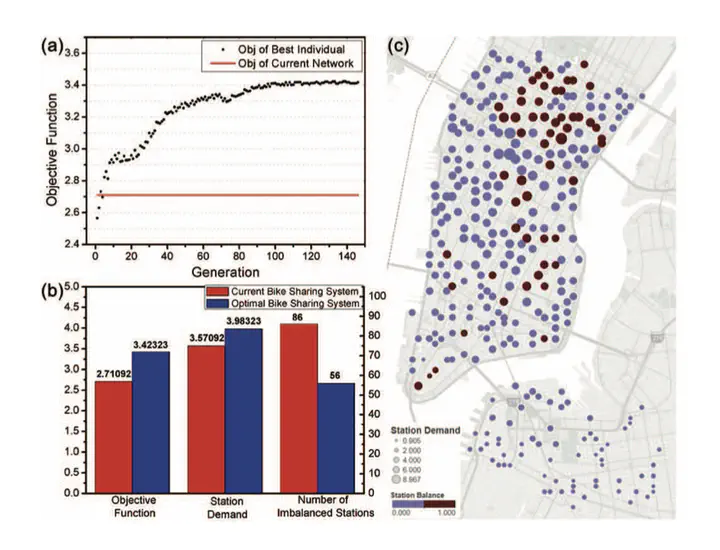Station Site Optimization in Bike Sharing Systems

Abstract
Bike sharing systems, aiming at providing the missing links in the public transportation systems, are becoming popular in urban cities. In an ideal bike sharing network, the station locations are usually selected in a way that there are balanced pick-ups and drop-offs among stations. This can help avoid expensive re-balancing operations and maintain high user satisfaction. However, it is a challenging task to develop such an efficient bike sharing system with appropriate station locations. Indeed, the bike station demand is influenced by multiple factors of surrounding environment and complex public transportation networks. Limited efforts have been made to develop demand-and-balance prediction models for bike sharing systems by considering all these factors. To this end, in this paper, we propose a bike sharing network optimization approach by considering multiple influential factors. The goal is to enhance the quality and efficiency of the bike sharing service by selecting the right station locations. Along this line, we first extract finegrained discriminative features from human mobility data, point of interests (POI), as well as station network structures. Then, prediction models based on Artificial Neural Networks (ANN) are developed for predicting station demand and balance. In addition, based on the learned patterns of station demand and balance, a genetic algorithm based optimization model is built to choose a set of stations from a large number of candidates in a way such that the station usage is maximized and the number of unbalanced stations is minimized. Finally, the extensive experimental results on the NYC CitiBike sharing system show the advantages of our approach for optimizing the station site allocation in terms of the bike usage as well as the required re-balancing efforts.